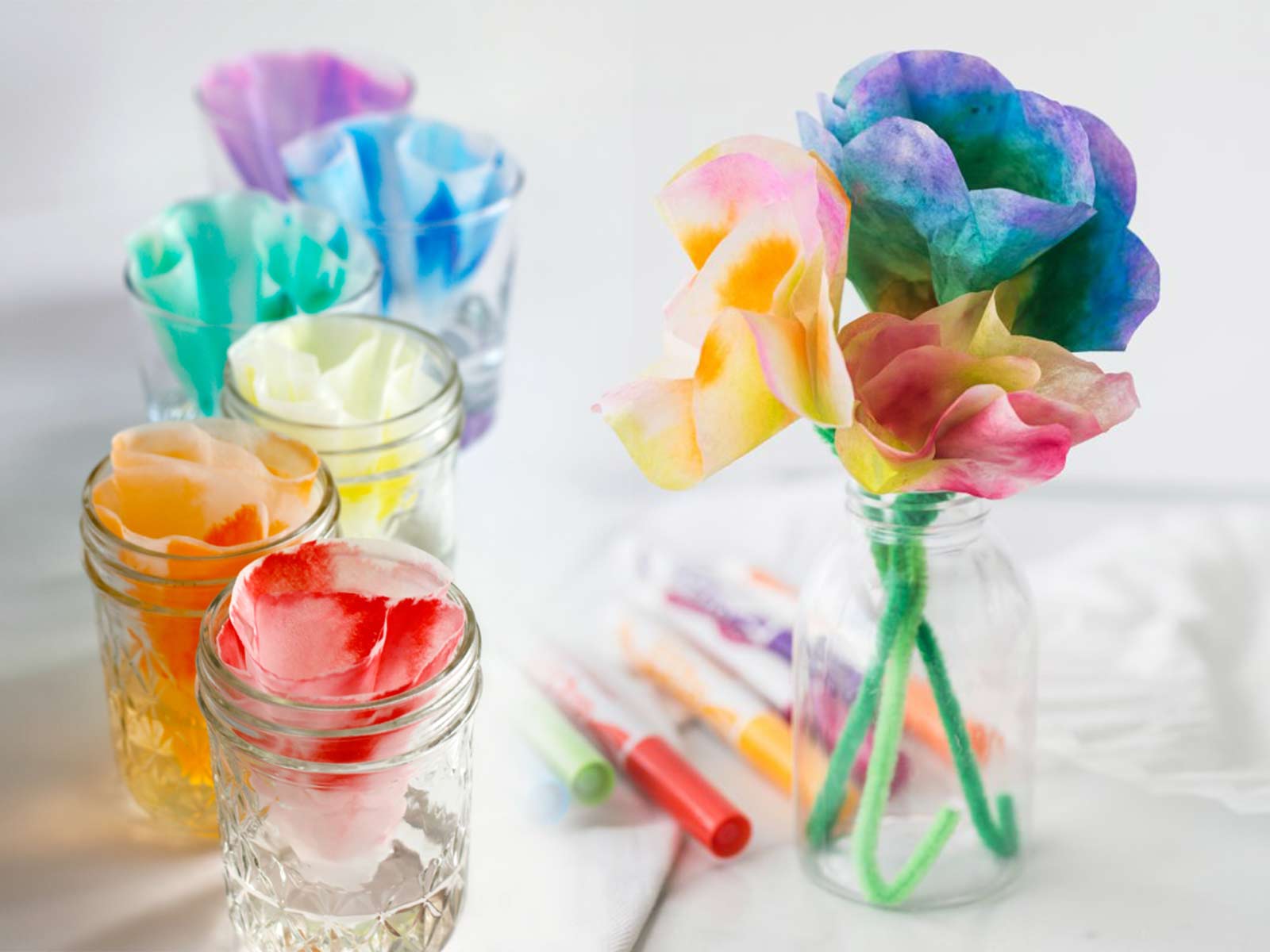
WHAT TO GET:
-
- White basket-style coffee filters
- Washable markers
- Water
- Plastic cups
- Paper towels or wax paper
- Green pipe cleaners
- Adult supervision
NOTE: You might want to cover your work area with newspaper first because the ink can bleed through as you draw and as the filters dry.
WHAT TO DO:
-
- Using washable markers, color one side of the filters with lots of colors. You can make designs, or color completely. Have fun experimenting!
- Pour about ½ inch of water into each cup.
- Fold the coffee filters in half, then in half again, and put one into each cup, pointed end down, making sure that only the tip of the filter touches the water.
- Let the filters sit in the water until the water travels up through the colors, all the way to the edges of the filters—about 30 to 45 minutes.
- Remove the filters and spread the flat to dry on paper towels or wax paper.
- When the filters are completely dry, stack two or more filters together and fold them in half 3 times (the same way as before). Pinch the middle of the folded filter & twist together to start a stem.
- Wrap a green pipe cleaner around the base, twisting tightly so the filters are secure.
- Gently separate the filters and fluff them outward to form a flower.
These beautiful flowers make a wonderful gift!
THE SCIENCE BEHIND THE EXPERIMENT:
This activity explores capillary action and chromatography. Capillary action is the name of the process when liquids, like water, move up through a solid. For example, plants use capillary action to move water up through their stalks. Chromatography is how different components of the inks are carried at different rates. Most washable markers are made of colored pigments and water. When you place the filter into the cup of water, the water in the cup rises through the paper of the filter and carries the pigments along with it. As the inks dissolve, the different pigments in it separate and travel at different speeds, creating the spread of colors that you see. Some ink colors, like black, contain many different components, while others, like red or blue, do not.

